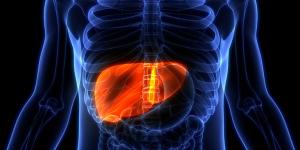GenBio Is Excited to share CSO's Research on the Gut-Liver Axis
Chronic liver disease, including fatty liver disease, causes around 2 million deaths each year.
ALISO VIEJO, CA, UNITED STATES, August 27, 2025 /EINPresswire.com/ -- GenBio's CSO Professor Lindsay Brown's research on Chronic liver disease, including fatty liver disease which accounts for two million deaths annually has garnered intetest in the scientific community. The Initial treatment for fatty liver disease is weight loss through exercise and dietary changes. The liver and gut work together to harvest energy from the diet for the functioning of the body. The gut-liver axis comprises the bidirectional communication pathways between the gut and liver. Nutrients and bacteria from the gut microbiome are transported to the liver by the hepatic portal vein, while the bile duct sends bile acids and antibodies to the small intestine. Bile acids derived from cholesterol in the liver help maintain a healthy gut microbiome and regulate intestinal barrier function and energy metabolism. Increased uptake of dietary saturated fats in liver cells produces a pro-inflammatory environment, leading to non-alcoholic fatty liver disease (NAFLD, now known as metabolic dysfunction-associated steatotic liver disease, MASLD). These diseases are common: MASLD occurs in 30% of the population, but in about 75% of obese adults.
Nutrient absorption from the gut is controlled by the gut microbiome, a complex ecosystem of bacteria, fungi, viruses, protozoa and archaea estimated as 1014 cells weighing about 1.5kg, functioning as a metabolic organ. The most common bacteria are Firmicutes (Gram-positive) and Bacteroidetes (Gram-negative anaerobes). Microbial metabolites such as short-chain fatty acids and hydrogen sulphide are signalling molecules for colonic epithelial and immune cells; gut microbiome-produced ethanol is increased in patients with more severe liver disease. Gut disease alters these molecules: in patients with ulcerative colitis, short-chain fatty acids are decreased while hydrogen sulphide is increased. As expected from the close interactions between gut and liver, gut microbiome products modify liver function. Short-chain fatty acids may improve fatty liver disease while hydrogen sulphide prevents liver inflammation so its deficiency is associated with severe liver disease. Dietary protein, especially from plants, reduces fat accumulation in the liver; diets high in protein such as the Mediterranean diet decrease the likelihood of fatty liver.
The gut microbiome is an environmental factor contributing to liver disease so manipulating the microbiome is a logical intervention to prevent and treat fatty liver. Cohort studies from the Netherlands have shown that processed and animal-derived foods may increase MASLD as they are associated with increased Firmicutes, Ruminococcus species of the genus Blautia, and endotoxin synthesis pathways. In contrast, plant foods and fish as in the Mediterranean diet, correlate with increased short-chain fatty acid synthesis to decrease MASLD.
Further support for the role of the gut microbiota in liver disease comes from studies changing the microbiome as a therapeutic intervention using substantial dietary changes, prebiotics, probiotics or microbial transplantation. Prebiotics, such as inulin and fructooligosaccharides, are selectively used by microorganisms to confer a health benefit. The aim of prebiotics is to increase the synthesis of helpful microbial metabolites such as short-chain fatty acids. Fibre is defined as plant material that the body cannot digest or absorb. Most prebiotics are fibre but not all fibre are prebiotics. Probiotics such as Lactobacillus and Bifidobacterium genera help to maintain the gut barrier and intervention by faecal microbial transplantation could correct disturbances in the microbiome. In the future, phage therapy using the viruses in the gut as antibacterial agents may also assist in normalising the gut microbiome and gut barrier function. Most of these studies have been in animal models of fatty liver disease but the relatively few human clinical trials with these interventions usually show improved inflammation in the liver which should lead to long-term decreases in fatty liver.
The coloured pigments from fruits such as plums and berries are known as anthocyanins; Studies in animal models of fatty liver disease have shown decreased inflammation and oxidative stress, leading to reduced liver deposition in the liver. The USA NHANES data from 2017-18 https://pmc.ncbi.nlm.nih.gov/articles/PMC9751205/ showed a lower risk of fatty liver in adults with increased anthocyanin intake. However, intervention studies with anthocyanins in patients with fatty liver have not yet been reported but they are essential to validate therapeutic options. Omega-3 fatty acids as in fish oil are anti-inflammatory and improve liver metabolism and so they are a potential treatment for fatty liver disease. Sustainable sources of omega-3 fatty acids include microalgae such as Nannochloropsis; this land-based aquacultural product also has the added benefit for fatty liver disease of a high protein content. Furthermore, these microalgae contain fibre, which can act as a prebiotic to improve the gut microbiome and potentially alleviate fatty liver disease.
Todd D Sonoga
GenBio Inc.
+1 949-705-8021
trilogyir@gmail.com
Visit us on social media:
LinkedIn
Facebook
X
GenBio Inc Elevator Pitch
Legal Disclaimer:
EIN Presswire provides this news content "as is" without warranty of any kind. We do not accept any responsibility or liability for the accuracy, content, images, videos, licenses, completeness, legality, or reliability of the information contained in this article. If you have any complaints or copyright issues related to this article, kindly contact the author above.




